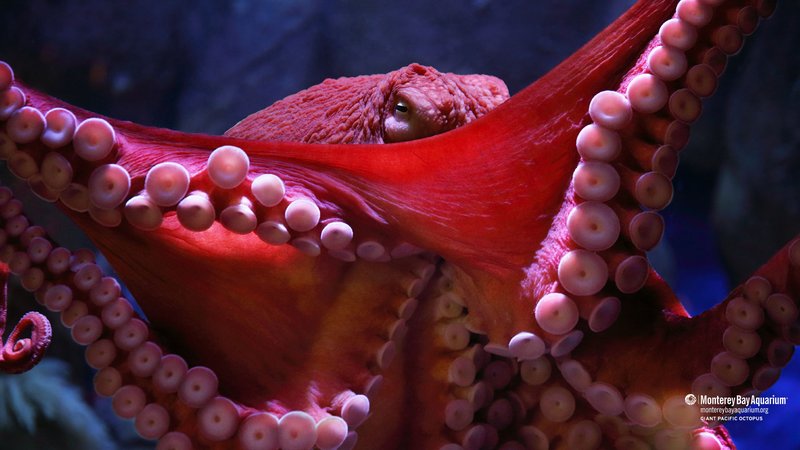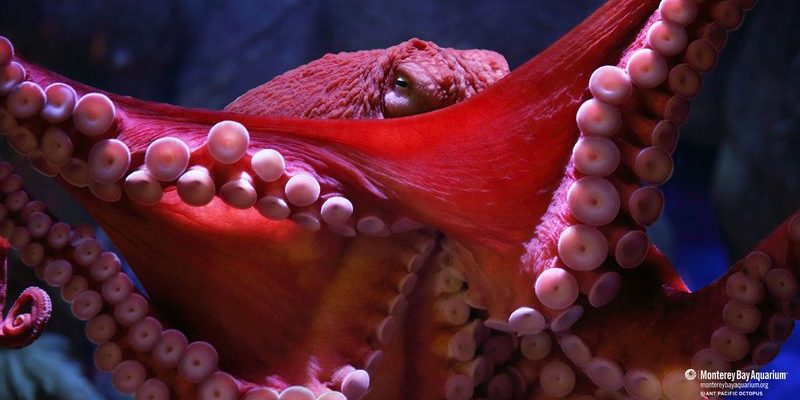
The Giant Pacific octopus, known scientifically as *Enteroctopus dofleini*, is the largest species of octopus and can weigh over 100 pounds! Found in the cold waters of the North Pacific, these octopuses are like the ninjas of the ocean. They can change color and texture to blend in with their surroundings, using their incredible camouflage skills to stay safe from predators. In this article, we’ll explore why this amazing creature is so important to marine environments and how its behavior impacts the world around it.
Understanding the Role of the Giant Pacific Octopus in the Food Web
You might be wondering how a single species can influence an entire ecosystem. Well, the Giant Pacific octopus plays a vital role in the marine food web. As a predator, it helps keep the population of its prey in check. These octopuses mainly feed on crabs, clams, fish, and other marine life.
When they hunt, they use their intelligence and unique physical adaptations. For example, their arms are lined with sensitive suckers that can detect taste and texture, allowing them to select the best parts of their meal. By preying on certain species, the Giant Pacific octopus helps maintain balance in the ecosystem, preventing overpopulation of particular species that could harm the ocean’s health.
Impact on Prey Populations
Think of the octopus as a natural regulator. Without predators like the Giant Pacific octopus, certain fish and crustacean populations could explode. This could lead to depletion of seagrass beds or coral reefs, which rely on a healthy balance of species to thrive. In many ways, this octopus is an unsung hero, gently steering the ship of the ocean’s health.
The Importance of Habitat
The Giant Pacific octopus thrives in environments like rocky shores and kelp forests. These habitats don’t just provide a home; they are rich with food and hiding spots from predators. They often choose dens—small caves or crevices—where they can stay safe, lay eggs, and rear their young.
These habitats are essential not only for the octopus but also for countless other marine species. The presence of the Giant Pacific octopus in an ecosystem helps to create a complex web of life. When they hunt, they may inadvertently impact the distribution of other marine organisms, shaping the entire community.
Affecting Biodiversity
The diversity of species is crucial for a healthy marine environment. By influencing the populations of various species, the Giant Pacific octopus indirectly promotes biodiversity. This variety helps ecosystems respond better to changes, like climate fluctuations.
Adaptations That Make a Difference
One of the most fascinating things about the Giant Pacific octopus is its incredible adaptability. They can escape from predators by squeezing into tight spaces or using ink to cloud their surroundings. Their ability to change color and texture is not just for camouflage—it’s also a way to communicate with other octopuses or even intimidate potential threats.
These adaptations have implications beyond survival. For instance, when other marine animals see an octopus blending perfectly into the rocks, they might change their behavior, too, enriching the interactions within the ecosystem.
The Giant Pacific Octopus and Climate Change
Climate change is a pressing issue that affects all marine ecosystems, including those where the Giant Pacific octopus resides. Changes in ocean temperature and acidity can impact the availability of prey and alter the habitats these octopuses rely on.
As conditions shift, the adaptability of the Giant Pacific octopus becomes even more crucial. Their resilience helps them survive in changing environments, which in turn supports the overall health of the ecosystems they inhabit. Understanding how these octopuses respond to environmental stressors can provide insights into the broader impacts of climate change on marine life.
Potential Consequences
If the Giant Pacific octopus faces challenges from climate change, the ripple effects could be significant. A decrease in their populations could mean unchecked growth in certain prey species, leading to imbalances in the ecosystem. It’s like removing a keystone in an arch—the whole structure can collapse.
Conservation Efforts and Future Outlook
Conservation is key to ensuring that the Giant Pacific octopus continues to thrive in its natural habitat. Various organizations and researchers are working hard to monitor and protect these amazing creatures. Habitat preservation, sustainable fishing practices, and pollution control are crucial steps in safeguarding their future.
Awareness is also an important part of conservation. When people understand the role of the Giant Pacific octopus in marine ecosystems, they may feel more inclined to support initiatives that protect these environments. After all, knowing that our actions can impact a magnificent creature helps foster a connection to the ocean.
Getting Involved
If you’re interested in helping out, consider supporting marine conservation organizations or participating in local clean-up efforts. Every little bit helps.
The Giant Pacific octopus is more than just an incredible marine creature; it serves as a litmus test for the health of ocean ecosystems. Its role as a predator, habitat connector, and adaptable survivor highlights the intricate balance of marine life. Understanding this octopus not only deepens our appreciation for the natural world but also reminds us of our responsibility to protect it.
In a world facing climate change and other environmental challenges, the Giant Pacific octopus stands as a testament to resilience and adaptability. By protecting these incredible creatures and their habitats, we play a part in ensuring the health of our oceans for generations to come. So next time you think of the ocean, remember: it’s not just about the picturesque views, but about the unseen, vital roles that creatures like the Giant Pacific octopus play in keeping the waters balanced and vibrant.

